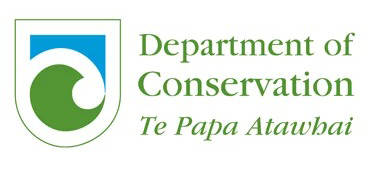Are you interested in the underwater sounds of Fiordland's marine environment? Do you operate a vessel in the FMA, and would you be interested in supporting acoustic research?
Researchers from the universities of Otago and Waikato are seeking help with accessing remote locations in the FMA for the deployment and servicing of acoustic underwater recorders.
Leah Crowe is a PhD student at the University of Otago and is one of several researchers studying underwater sounds in Fiordland. Leah will be deploying acoustic recorders in various locations from Taiporoporo/Charles Sound to Rakituma Preservation Inlet to monitor the critically endangered Fiordland bottlenose dolphin population. Her research is part of a national study examining underwater sounds in marine reserves throughout the motu.
If you would like to offer logistical support for this research, please get in touch with Leah at leah.crowe@postgrad.otago.ac.nz.
Read more about the research below:
A collaboration between the universities of Otago and Waikato, and the Department of Conservation is underway in the Fiordland (Te Moana o Atawhenua) Marine Area (FMA) focusing on underwater sound.
Leah Crowe is a PhD student at the University of Otago and is one of several researchers working on the project. Leah will be deploying acoustic recorders in various locations from Taiporoporo/Charles Sound to Rakituma Preservation Inlet to monitor the critically endangered Fiordland bottlenose dolphin population. Her research is part of a national study examining underwater sounds in marine reserves throughout the motu.
The small Doubtful Sound/Patea resident bottlenose population has been monitored continually since 1990, and while these individuals are regularly sighted within the Doubtful Patea fiord complex, they have also been sighted elsewhere in the FMA. Individuals from this population have been sighted in Te Rā/Dagg Sound, Hinenui/Nancy Sound, and Te Puaitaha/Breaksea Sound. It is also possible that the Tamatea/Dusky Sound bottlenose population may be using neighboring fiords.
Underwater sound recorders will be used to provide passive acoustic monitoring of dolphin presence within the fiords. Leah aim’s to use her research to better understand the contemporary range of bottlenose dolphins throughout the FMA, in order to determine whether visual monitoring methods and effort should be focused in areas outside of their main range.
What does protection sound like?
Underwater habitats are comprised of a diverse range of biological and physical sounds (e.g., animals communicating, weather and wind acting on the sea surface). Sound reflects many vital biological processes in a realm where other signals are often limited by light, visibility, and accessibility. As human activities increase, so too does the occurrence and intensity of associated noise; however, the acoustic soundscape is often an overlooked aspect of marine protection. As part of a nationwide study on the soundscape in marine protected areas, acoustic recorders deployed in the Fiordland Marine Area will be used to assess acoustic signals of ecosystem health and biodiversity.



